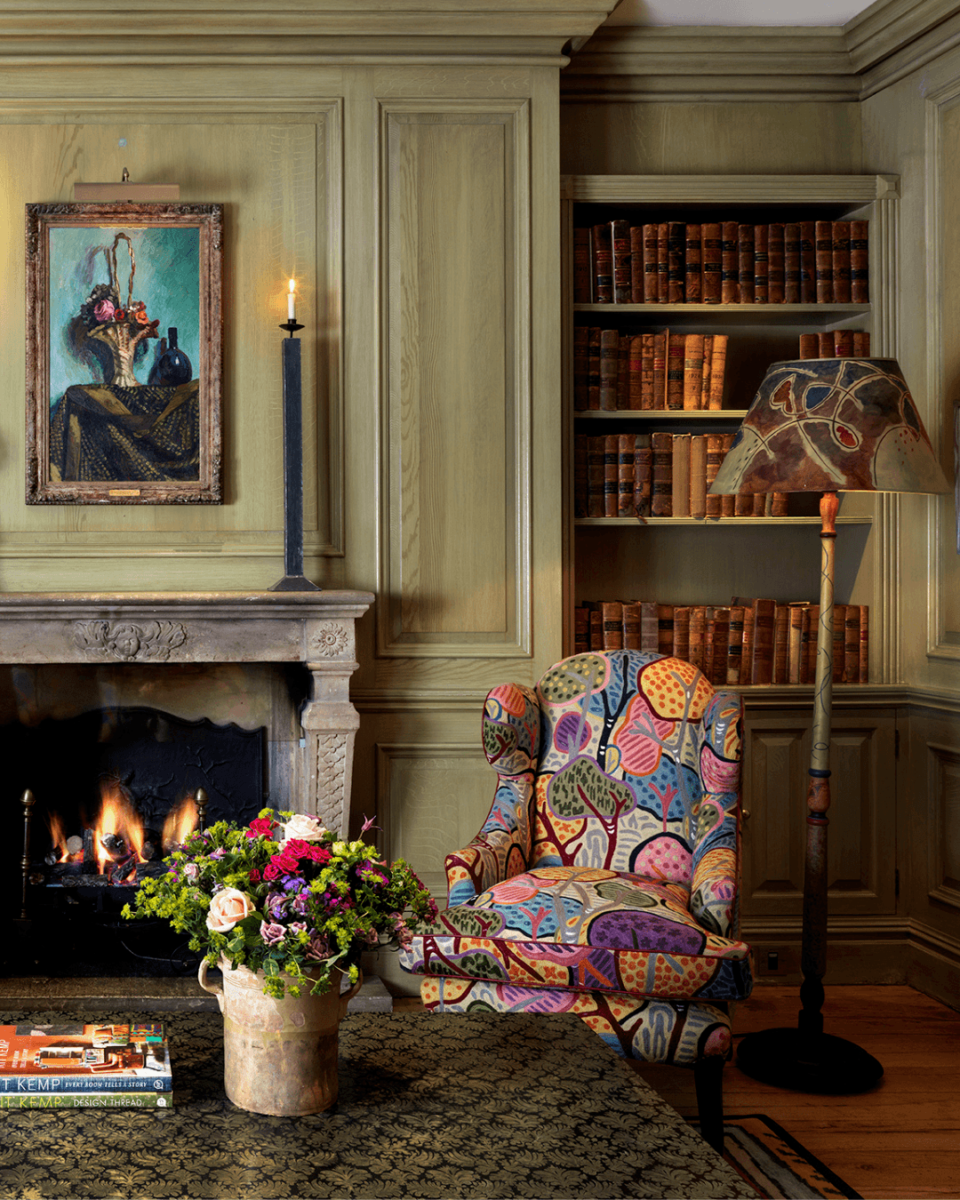Lucy, our Head of Marketing recently brought some treasure into our Design Studio. A cutting of a furnishing fabric from the Bloomsbury era which was given by her husband’s grandfather. It was found when he and his partner Dora Pease moved into the former home of Dame Veronica Wedgewood on Oakley Street in Chelsea. When Dora inherited the property from Veronica, she inherited the fabric too.
Delving in a bit deeper, we can see the name of this fabric is ‘Anemophis’ and from its marked edging it was an Omega Workshops fabric.
Roger Fry (1866 – 1934), was an artist and critic who founded the Omega Workshops which were for decorative and everyday art. Opened in 1913 at 33 Fitzroy Square in Bloomsbury, central London, the Workshops sold furniture, fabrics and household accessories designed and made by artists. Names we know very well are Vanessa Bell and Duncan Grant, who were his great friends and also directors. Three rooms at the Workshops were designed with their products to promote the style and they released a catalogue in 1914. They were so successful they went on to have customers who they designed entire interior schemes for.
This fabric was available in three colourways and was allegedly inspired by Fry’s ‘Still Life, Jug and Eggs’ (1912) painting. Often Fry, Bell and Grant were prepared to use their own paintings as inspiration for their interior pieces.
Fry insisted that all Omega work was produced anonymously. He felt that objects and furniture should be bought and valued for their beauty rather than because of the reputation of the artist. Designs were unsigned and marked only with the symbol Ω, which is the Greek letter Omega. Omega is the last letter of the Greek alphabet, and in the late 19th century it was used to mean the ‘last word’ on a subject.
This was one of six linens that were printed at a factory near Rouen in France using an undisclosed technical process that was aimed at preserving the ‘freedom and spontaneity of the original drawing’.
We hope you feel as inspired as we are by this lovely story!
The Anemophis fabric is typically Bloomsbury with its dusky yet uplifting colour palette and lamp black details, adding contrast and definition. It later became part of the Crafts Council exhibition in 1984, which was founded with the aim to conserve and shine a light on works of fine craftsmanship to the public in England and Wales.
It is no secret that we love all things Bloomsbury and at Charlotte Street Hotel, we celebrate this wonderful style. Explore the Drawing Room at Charlotte Street Hotel here.









